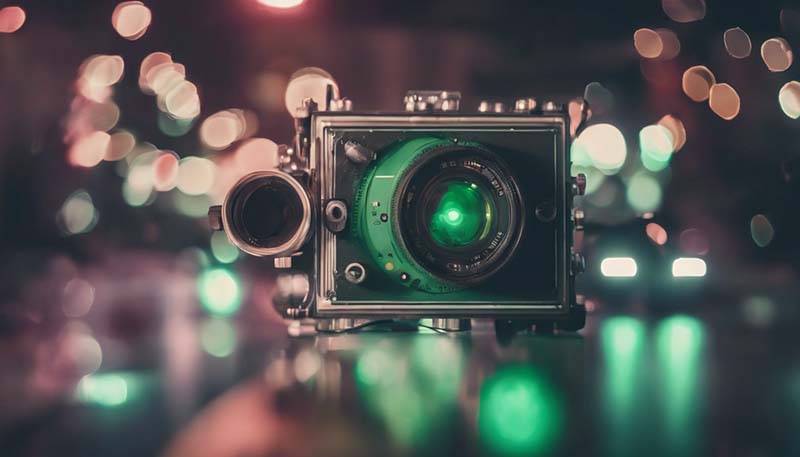Night Vision Systems: Seeing the Unseen to Prevent Collisions
Active Safety Technologies
Night Vision Systems: Seeing the Unseen to Prevent Collisions
Night vision systems are a critical technology for enhancing safety in various fields, including military operations, aviation, maritime navigation, and vehicular transportation. These systems allow users to see in conditions of low light or total darkness, thereby reducing the risk of collisions and improving overall situational awareness. This article delves into the importance of night vision systems, their types, applications, and the technology behind them.
Introduction to Night Vision Systems
Night vision systems work by amplifying available light or utilizing infrared (IR) illumination to create an image in darkness. They are particularly important for night-time operations where visibility is limited, and the risk of accidents is high. The ability to see in the dark can be the difference between life and death in many scenarios, from military engagements to driving on a dark road.
Types of Night Vision Systems
1. Image Intensification (I2)
Image intensification systems are the most common type of night vision devices. They work by amplifying ambient light, including starlight and moonlight, to create a visible image. These systems typically use a photocathode to convert light into electrons, which are then accelerated and focused onto a phosphor screen to produce a visible image.
Advertisement
2. Thermal Imaging
Thermal imaging systems, also known as infrared cameras, detect heat emitted by objects. Unlike image intensifiers, thermal imagers do not rely on ambient light. They are capable of differentiating the heat signatures of various objects, making them excellent for identifying warm bodies such as humans or animals against a cooler background.
3. Near-Infrared Illumination
Near-infrared (NIR) illumination systems emit light in the near-infrared spectrum, which is invisible to the human eye but can be detected by night vision devices. When used in conjunction with image intensification or thermal imaging systems, NIR illumination can significantly extend the range and clarity of images.
Applications of Night Vision Systems
Military Applications
Night vision systems are essential for military operations that take place during the night or in low-light conditions. They are used for surveillance, reconnaissance, navigation, and targeting enemy forces without being detected.
Aviation and Maritime Navigation
Pilots and seafarers rely on night vision systems to navigate through dark environments. These systems help avoid collisions with other aircraft or ships and can assist in spotting obstacles or hazards that may not be visible to the naked eye.
Law Enforcement
Law enforcement agencies use night vision systems for search and rescue operations, surveillance, and tactical engagements. They provide officers with the ability to see suspects and navigate through dark environments without alerting them with visible light.
Vehicles and Driving
Modern vehicles are increasingly being equipped with night vision systems to enhance driver safety. These systems can detect pedestrians, animals, or obstacles on the road that may not be visible with headlights alone, providing the driver with additional reaction time to avoid collisions.
Technology Behind Night Vision Systems
The technology behind night vision systems is constantly evolving, with advancements in sensor technology, image processing, and miniaturization. Innovations such as multi-spectral imaging, which combines data from different parts of the electromagnetic spectrum, are enhancing the capabilities of these systems.
Sensor Technology
Sensors in night vision systems are becoming more sensitive and can detect an increasingly wider range of the light spectrum. This allows for better image quality and resolution, even in extremely low-light conditions.

Image Processing
Sophisticated image processing algorithms are used to clean up and enhance the images produced by night vision systems. This includes noise reduction, edge enhancement, and automatic gain control to ensure a clear and detailed image.
Miniaturization
The miniaturization of electronics has allowed for the development of compact and lightweight night vision systems. This is particularly important for portable devices and for integrating into other equipment such as helmets, goggles, and weapon sights.
Conclusion
Night vision systems play a crucial role in enhancing safety and operational effectiveness in various fields. As technology advances, these systems are becoming more sophisticated, offering greater clarity, range, and versatility. The ongoing development of night vision systems is a testament to the importance of being able to see the unseen, particularly in situations where visibility is a significant challenge.
References
For further reading and to explore the sources of information used in this article, please refer to the following resources:
- [1] "Night Vision Technology and Applications." Defense Update, .
- [2] "Types of Night Vision Devices." Global Security, .
- [3] "Thermal Imaging 101." FLIR Systems, .
- [4] "The Science of Night Vision." Scientific American, .